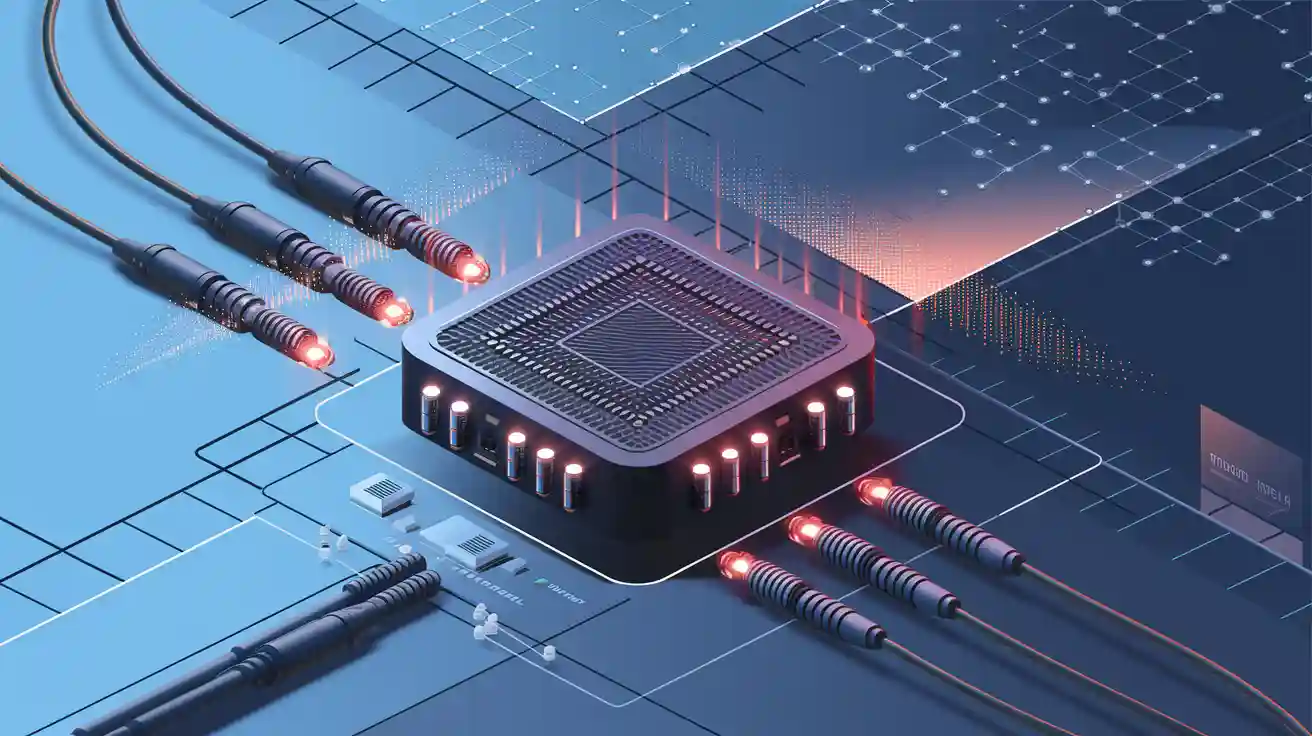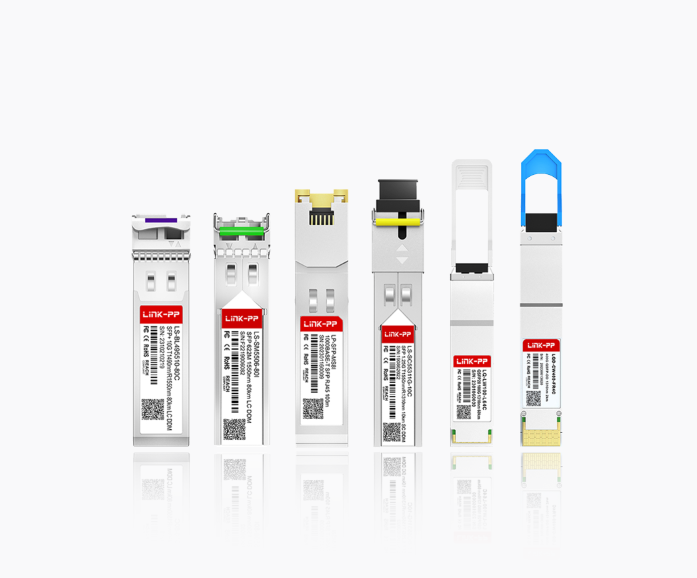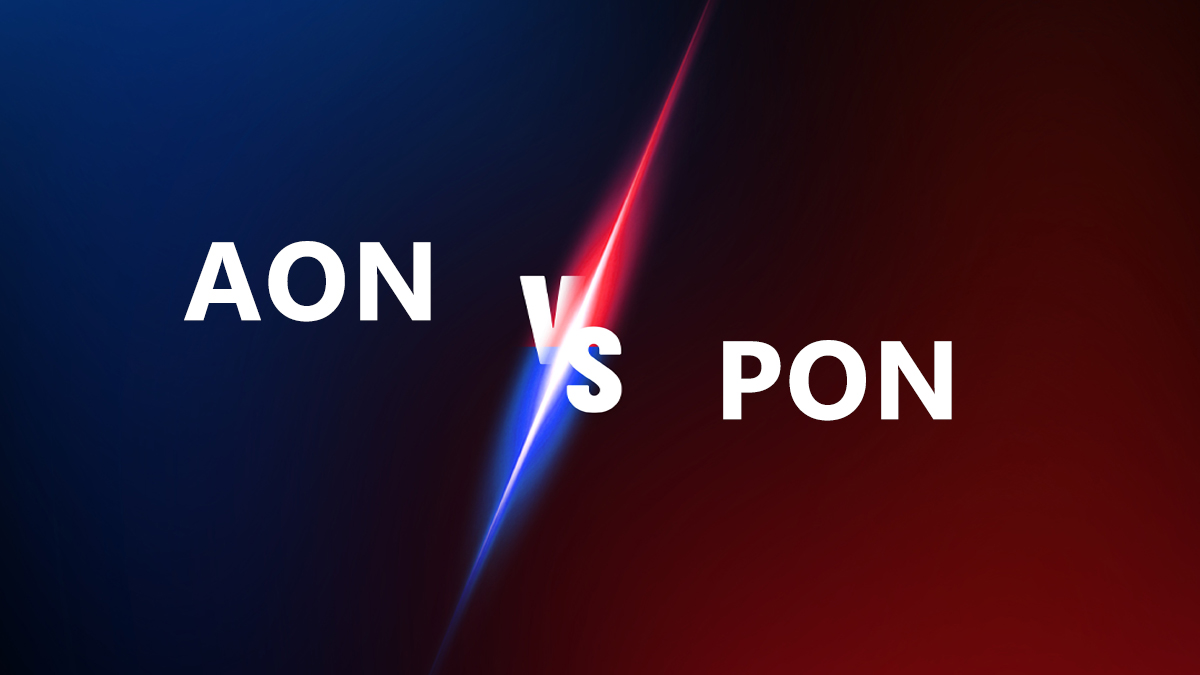
In the relentless pursuit of faster, more reliable, and scalable connectivity, fiber optic networks reign supreme. But not all fiber networks are built the same. The fundamental choice between Active Optical Networks (AON) and Passive Optical Networks (PON) significantly impacts performance, cost, manageability, and suitability for various applications. Understanding the key differences between AON and PON is crucial for network architects, service providers, and businesses investing in future-proof infrastructure. Let’s dive deep into this critical comparison.
Understanding the Core Technologies: Active vs Passive
The defining distinction lies in how the optical signal is managed and distributed between the central point (like a Central Office or Data Center) and the end-users (Subscribers, Businesses, Cellsites).
Active Optical Network (AON): Think Switched Ethernet over Fiber
How it Works: AON functions similarly to a traditional Ethernet LAN but uses fiber optics. It employs active, electrically powered switching equipment (like switches or routers) at key points within the distribution network, typically at street cabinets or intermediate points. Each subscriber or endpoint has a dedicated fiber strand running back to an active switch port. These active devices perform signal regeneration, amplification, and switching/routing.
Key Components: Core Router/Switch -> Optical Transceivers (converting electrical signals to optical and vice versa) -> Dedicated Fiber Strands -> Active Ethernet Switch (in field) -> More Fiber -> End User Optical Network Terminal (ONT) or Media Converter.
Topology: Point-to-Point (P2P) using active switches (effectively creating star topologies).
Passive Optical Network (PON): Sharing the Light
How it Works: PON relies entirely on passive optical components (requiring no electrical power) to split the optical signal from a single feeder fiber to multiple end-users. The critical component is the Optical Splitter (or coupler), typically placed in an outdoor cabinet or splice point. All subscribers share the bandwidth of the single upstream fiber back to the Optical Line Terminal (OLT) at the central office. Time-Division Multiple Access (TDMA) is used to manage upstream transmissions.
Key Components: OLT (Central Office) -> Optical Transceiver Module -> Feeder Fiber -> Passive Optical Splitter -> Distribution Fibers -> End User Optical Network Unit (ONU).
Topology: Point-to-Multipoint (P2MP) using passive splitters (physical star, logical bus).
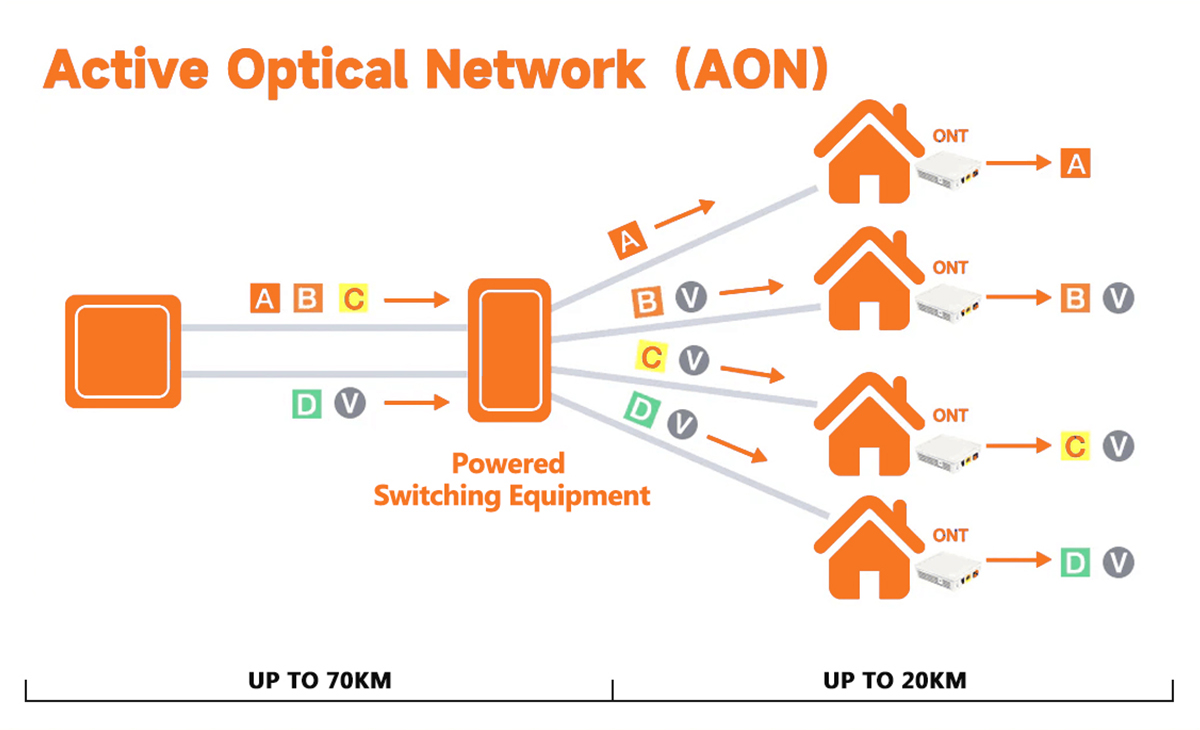
AON vs PON: The Critical Comparison
Let's break down the key differences across essential dimensions:
Feature | Active Optical Network (AON) | Passive Optical Network (PON) |
|---|---|---|
Core Technology | Active (Powered) Switches/Routers | Passive Splitters (Unpowered) |
Topology | Point-to-Point (P2P) or Switched Star | Point-to-Multipoint (P2MP) |
Bandwidth | Dedicated per User (e.g., 1G/10G/25G/100G per port) | Shared among Users on Splitter (e.g., 2.5G/10G/25G/50G GPON/XGS-PON/NG-PON2 shared) |
Scalability | High (Add Switches/Ports), but requires active hardware | High (Add ONUs), limited by split ratio & OLT capacity |
Max Distance | Typically 70-90km (limited by optics) | Typically 20km (GPON/XGS-PON), up to 40km+ with specific optics |
Fiber Utilization | Lower (Dedicated fiber per user to aggregation point) | Higher (Single fiber serves many users via splitter) |
Fault Impact | Localized (Affects only users on failed link/switch) | Wider (Fiber cut/OLT failure affects all users on PON) |
Management | More Complex (Manage active devices in field) | Simpler (Manage only OLT & ONUs; splitters passive) |
Security | Inherent (Dedicated fiber; standard Ethernet security) | Relies on Encryption (AES in modern PON standards) |
Upfront Cost (Capex) | Higher (More active equipment, more fiber) | Lower (Fewer active components, less fiber) |
Operational Cost (Opex) | Higher (Power for field devices, more complex management) | Lower (No power for splitters, simpler management) |
Ideal Use Cases | Large Enterprises, Data Centers, Mobile Fronthaul/Backhaul (5G), Critical Infrastructure, High-Density Business Parks | Fiber-to-the-home(FTTH), Small Businesses, Remote Area, 5G Networks |
Diving Deeper: Advantages and Disadvantages
AON Advantages:
Guaranteed, Symmetric Bandwidth: Each user gets dedicated capacity, unaffected by neighbors' usage. Crucial for high-demand applications like high-performance data center interconnects or low-latency financial trading networks.
High Scalability & Flexibility: Easily scales bandwidth per user by upgrading port speeds on switches. Supports diverse protocols and services easily.
Longer Reach: Can achieve greater distances without regeneration, important for long-haul optical transceiver links.
Easier Troubleshooting & Fault Isolation: Problems are typically isolated to specific links or devices.
Mature Security: Leverages well-understood Ethernet security mechanisms.
AON Disadvantages:
Higher Costs: Significantly more Capex (switches, extensive fiber) and Opex (power, cooling, management).
Increased Complexity: Requires deploying, powering, and managing active equipment in potentially harsh outside plant environments.
Lower Fiber Efficiency: Requires more fiber strands in the ground/duct.
PON Advantages:
Lower Costs: Major Capex savings on fiber infrastructure and active equipment. Lower Opex due to passive outside plant and simpler management.
High Fiber Efficiency: Serves many users (32, 64, even 128) with a single feeder fiber. Essential for large-scale FTTH rollouts.
Simpler Outside Plant: No need for powered cabinets housing active switches near users. Just splitters in passive enclosures.
Proven for Mass Deployment: The dominant architecture for residential FTTH globally due to its cost-effectiveness.
Evolving Standards: Speeds continuously increase (GPON -> XGS-PON -> 25G/50G PON -> 100G PON).
PON Disadvantages:
Shared Upstream Bandwidth: Peak-time congestion is possible if oversubscribed. Upstream is often slower than downstream.
Limited Per-User Bandwidth Guarantee: Users share the OLT port capacity.
Shorter Standard Reach: Typically limited to ~20km for common standards, though extendable.
Security Reliance on Encryption: While AES is robust, it's an added layer compared to dedicated fiber.
Troubleshooting Complexity: Issues on the shared fiber or OLT impact multiple users; pinpointing faults can be trickier.
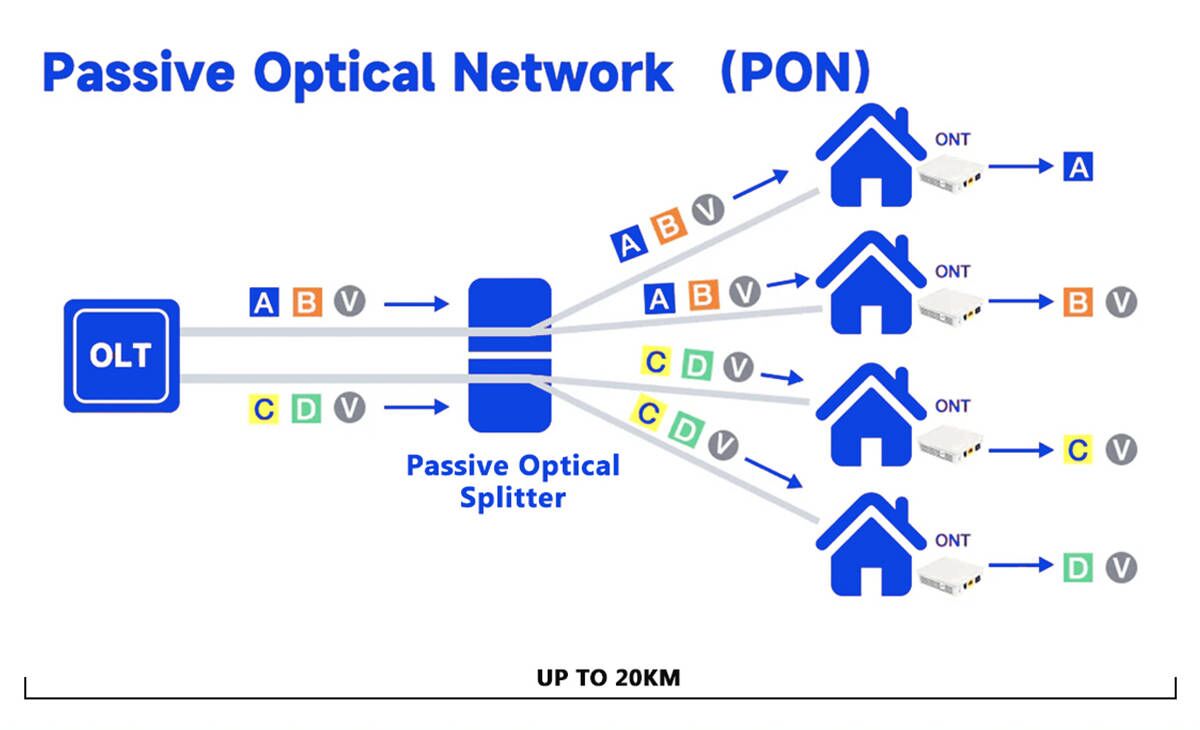
Choosing the Right Network for Your Needs
Factors to Consider
Selecting the right optical network depends on several critical factors. You need to evaluate your operational demands, geographic location, and long-term goals. Here are some key considerations:
Scalability and Flexibility: If your network needs to adapt to growing user demands or geographic expansion, scalability becomes essential. AON offers flexibility through active components, while PON provides cost-effective scalability for localized deployments.
Bandwidth Requirements: High-bandwidth applications, such as industrial automation or data centers, benefit from AON’s dedicated connections. PON, with its shared bandwidth, suits residential areas or small-scale setups.
Cost Efficiency: PON’s passive design reduces installation and operational costs, making it ideal for budget-conscious projects. AON, while more expensive, delivers superior performance for high-demand environments.
Reliability and Security: AON’s point-to-point architecture ensures robust security and reliability, especially for sensitive data. PON, though less secure, offers reliable connectivity with minimal maintenance.
Environmental Impact: PON’s lower power consumption aligns with eco-friendly initiatives, while AON requires a continuous power supply, increasing energy usage.
Recent industry surveys confirm these factors as pivotal in network selection. Professionals emphasize scalability, cost efficiency, and reliability as top priorities when choosing between AON and PON.
Use Cases for AON
Active Optical Networks excel in scenarios requiring high performance and long-distance coverage. You’ll find AON particularly useful in the following applications:
Industrial Operations: Manufacturing plants and industrial facilities rely on AON for uninterrupted data flow and high-speed connectivity. The point-to-point architecture ensures consistent performance across vast areas.
Large Enterprises: Businesses with extensive networks benefit from AON’s scalability and security. Dedicated fiber connections support high-bandwidth applications like video conferencing and cloud computing.
Urban Infrastructure: Cities with dense populations require networks that can handle heavy traffic. AON’s active components amplify signals, ensuring reliable connectivity even during peak usage.
Government and Defense: Sensitive data transmission demands robust security. AON’s architecture minimizes interception risks, making it ideal for government facilities and defense operations.
Use Cases for PON
Passive Optical Networks shine in cost-effective and scalable deployments. You’ll find PON particularly advantageous in the following scenarios:
Fiber-to-the-Home (FTTH): PON’s point-to-multipoint architecture makes it ideal for residential areas. A single fiber connection serves multiple homes, reducing infrastructure costs.
Small Businesses: For businesses with limited bandwidth needs, PON provides reliable connectivity without the expense of active components.
Remote Areas: PON’s passive design ensures efficient communication in regions with limited access to power. Telecom operators use PON to bridge the digital divide and support economic development.
5G Networks: PON-based architectures, such as XGS-PON, minimize costs while supporting high-density areas. These systems deliver symmetrical speeds of up to 10 Gbps, making them suitable for modern broadband services.
The Role of High-Quality Optical Transceivers
Regardless of whether you deploy AON or PON, reliable optical transceivers are the unsung heroes. These modules convert electrical signals to light and vice versa, defining link reach, speed, and reliability. Choosing the right optical transceiver module compatible with your OLTs, switches, ONUs, and media converters is essential. For demanding AON environments or pushing PON distances, high-performance, low-power optical transceivers ensure signal integrity and network stability. Partnering with a trusted supplier guarantees compatibility and longevity.
LINK-PP: Your Partner in Optical Networking Solutions
At LINK-PP, we understand the complexities of modern optical network design. Whether your project demands the raw power and dedicated bandwidth of an AON solution or the cost-effective scalability of a PON deployment, we provide the critical components for success. We offer a comprehensive range of high-quality, standards-compliant optical transceivers (SFP, SFP+, XFP, QSFP28, etc.) suitable for both AON switches and PON OLTs/ONUs.
Our expert team can help you:
Select the optimal optical transceiver for your specific AON or PON equipment and reach requirements.
Navigate the complexities of different PON standards (GPON, XGS-PON, NG-PON2).
Source reliable components for high-density optical connectivity solutions.
Ensure compatibility and performance for your mission-critical network links.
Need expert advice on selecting the right architecture or sourcing high-performance optical transceivers for your AON or PON deployment?
Contact LINK-PP today! Our specialists are ready to discuss your project requirements and provide tailored optical connectivity solutions that deliver performance, reliability, and value. Visit our website or reach out for a consultation. Optimize your optical infrastructure with LINK-PP.
FAQ
1. Which network is better for long-distance coverage, AON or PON?
AON is better for long-distance coverage. Its active components amplify signals, allowing it to cover distances up to 90 km. PON, with its passive splitters, typically supports a maximum range of 20 km. Choose AON for industrial or enterprise setups requiring extended reach.
2. Can AON and PON coexist in the same network?
Yes, AON and PON can coexist. Hybrid systems combine the strengths of both technologies. For example, AON can handle long-distance backhaul, while PON serves localized, cost-effective connections. This approach optimizes performance and cost efficiency.
3. Which network is more energy-efficient?
PON is more energy-efficient. Its passive components require no power, reducing energy consumption. AON, on the other hand, relies on powered devices like switches and routers, which increase energy usage. For eco-friendly deployments, PON is the better choice.
4. How do AON and PON differ in terms of security?
AON offers higher security due to its point-to-point architecture. Each user gets a dedicated fiber connection, minimizing interception risks. PON uses a shared fiber, which could pose vulnerabilities. However, modern encryption protocols like AES-128 enhance PON’s security for most applications.
5. What factors should I consider when choosing between AON and PON?
Consider these factors:
Bandwidth Needs: AON for high-demand; PON for shared usage.
Cost: PON is more affordable.
Distance: AON supports longer ranges.
Scalability: AON adapts better to growth.
Power: PON consumes less energy.
Evaluate your specific requirements to make the best choice.


